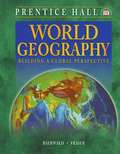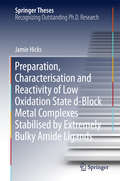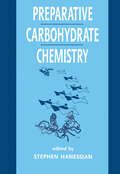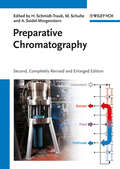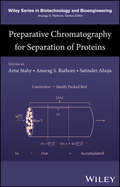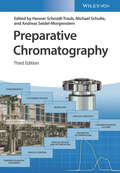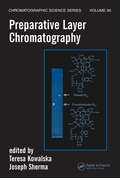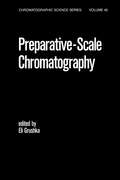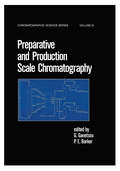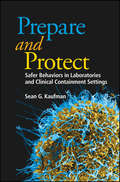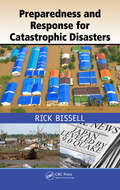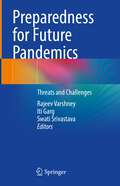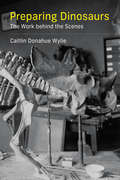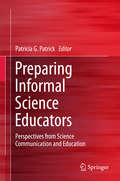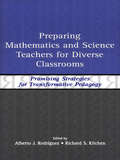- Table View
- List View
Prentice Hall Science: Matter, Building Block of the Universe
by Prentice HallIn this textbook one will begin their own kind of voyage to discover the nature of materials that form the universe--the matter inside and around.
Prentice Hall Science: Motion, Forces, and Energy
by Ph Inc. StaffWhat Is Motion, The Nature of Forces, Forces in Fluids, Work, Power, and Simple Machines, Energy: Forms and Changes.
Prentice Hall Science: Motion, Forces, and Energy
by Prentice HallAmong topics covered in this book include: motion, forces, fluids, machines, forms, changes, etc.
Prentice Hall World Explorer: Asia and the Pacific
by Heidi Hayes Jacobs Michal L. Levasseur Brenda RandolphThis book geographically explores Asia and the Pacific in depth. The readings and activities in this book will help you discover answers to these Guiding Questions. * What are the main physical features of Asia and the Pacific? * What are the main characteristics of the cultures of Asia and the Pacific? * How have Asia and the Pacific influenced other world cultures? * How do the people of this region make a living? * How is the region changing?
Prentice Hall World Explorer: Eastern Hemisphere
by Heidi Hayes Jacobs Michal L. Levasseur Brenda RandolphAre you curious about our Earth? Do you want to know why some places in the world are cold and some are hot? Have you wondered why more people live in cities and fewer people live in other places? Would you like to find mountaintops or valleys to explore? If you answered yes to any of these questions, you want to know more about geography. Farmers grow corn, traders cross the ocean, and you walk or take a bus to school. Geography explains all of these activities--and many more.
Prentice Hall World Geography: Building a Global Perspective
by Celeste Fraser Thomas J. BeawaldWhat does it mean to learn world geography? It means more than gathering the facts, names, and data about the nations and lands of the earth. It means gaining a feel for, or an appreciation of, the richness and variety of the face of our planet.
Prentice Hall World Geography: Building a Global Perspective
by Celeste Fraser Thomas J. BaerwaldThis program will help you learn content, develop skills, and apply what you know. Examine these pages to understand how this textbook and its online resources can guide you through the study of world geography.
Prentice Hall: Biology (Tennessee Edition)
by Kenneth R. Miller Joseph S. LevineNIMAC-sourced textbook
Preparation, Characterisation and Reactivity of Low Oxidation State d-Block Metal Complexes Stabilised by Extremely Bulky Amide Ligands
by Jamie HicksThis thesis describes the synthesis and characterization of numerous metal-metal bonded complexes that are stabilized by extremely bulky amide ligands. It provides a comprehensive overview of the field, including discussions on groundbreaking complexes and reactions, before presenting in detail, exciting new findings from the PhD studies. The thesis appeals to researchers, professors and chemistry undergraduates with an interest in inorganic and/or organometallic chemistry.
Preparative Carbohydrate Chemistry
by Stephen HanessianDetailing commonly used methods and procedures, this reference discusses the reactions and derivative forms of carbohydrates. Preparative Carbohydrate Chemistry covers the formation, cleavage, and reactions of derivatives and illustrates bond-forming reactions of SN2 types, free radicals, chain extensions, and branching. The contents include: sugar
Preparative Chromatography
by Michael Schulte H. Schmidt-Traub Andreas Seidel-MorgensternCompletely revised and substantially extended to reflect the developments in this fast-changing field. It retains the interdisciplinary approachthat elegantly combines the chemistry and engineering involved to describe the conception and improvement of chromatographic processes.It also covers recent advances in preparative chromatographic processes for the separation of "smaller" molecules using standardlaboratory equipment as well as the detailed conception of industrial chemical plants. The increase in biopharmaceutical substances isreflected by new and revised chapters on different modifications of continuous chromatography as well as ion-exchange chromatography andother separation principles widely used in biochromatography.Following an introductory section on the history of chromatography, the current state of research and the design of chromatographic processes, the book goes on to define the general terminology. There then follow sections on stationary phases, selection of chromatographicsystems and process concepts. A completely new chapter deals with engineering and operation of chromatographic equipment. Final chapters on modeling and determination of model parameters as well as model based design, optimization and control of preparative chromatographic processes allow for optimal selection of chromatographic processes.Essential for chemists and chemical engineers in the chemical, pharmaceutical, and food industries.
Preparative Chromatography
by Henner Schmidt-Traub, Michael Schulte, and Andreas Seidel-MorgensternCompletely revised and substantially extended to reflect the developments in this fast-changing field. It retains the interdisciplinary approach that elegantly combines the chemistry and engineering involved to describe the conception and improvement of chromatographic processes. It also covers recent advances in preparative chromatographic processes for the separation of "smaller" molecules using standard laboratory equipment as well as the detailed conception of industrial chemical plants. The increase in biopharmaceutical substances is reflected by new and revised chapters on different modifications of continuous chromatography as well as ion-exchange chromatography and other separation principles widely used in biochromatography. Following an introductory section on the history of chromatography, the current state of research and the design of chromatographic processes, the book goes on to define the general terminology. There then follow sections on stationary phases, selection of chromatographic systems and process concepts. A completely new chapter deals with engineering and operation of chromatographic equipment. Final chapters on modeling and determination of model parameters as well as model based design, optimization and control of preparative chromatographic processes allow for optimal selection of chromatographic processes. Essential for chemists and chemical engineers in the chemical, pharmaceutical, and food industries.
Preparative Chromatography for Separation of Proteins
by Satinder Ahuja Anurag S. Rathore Arne StabyPreparative Chromatography for Separation of Proteins addresses a wide range of modeling, techniques, strategies, and case studies of industrial separation of proteins and peptides.• Covers broad aspects of preparative chromatography with a unique combination of academic and industrial perspectives• Presents Combines modeling with compliantce useing of Quality-by-Design (QbD) approaches including modeling• Features a variety of chromatographic case studies not readily accessible to the general public• Represents an essential reference resource for academic, industrial, and pharmaceutical researchers
Preparative Chromatography: Of Fine Chemicals And Pharmaceutical Agents
by Michael Schulte Andreas Seidel-Morgenstern Henner Schmidt-TraubThe third edition of this popular work is revised to include the latest developments in this fast-changing field. Its interdisciplinary approach elegantly combines the chemistry and engineering to explore the fundamentals and optimization processes involved.
Preparative Layer Chromatography (Chromatographic Science Series)
by Joseph Sherma Teresa KowalskaPreparative Layer Chromatography explains how this method is used for separating large quantities of mixtures containing a wide variety of important compounds. It offers a broad review of preparative layer chromatography (PLC) applications and adaptable working procedures for microseparations involving organic, inorganic, and organometallic compoun
Preparative Scale Chromatography (Chromatographic Science Ser. #46)
by Eli GrushkaDiscusses a model for the propagation of a finite concentration zone in a chromatographic column for the case of a single component sample, and explores operating conditions of ion-exchange chromatography for the production of albumin from bovine serum and plasma. Focus is on theoretical, instrument
Preparative and Production Scale Chromatography
by P. E. Barker G GanetsosDescribes the latest developments in the scaling-up and application of chromatographic operations and demonstrates that production-scale chromatography is a powerful and invaluable separation process. The book covers every important process design and reveals actual, immediately applicable techniques and is designed to appeal to design, chemical/biochemical, and research and development engineers, process development managers, bioprocess technologists, analytical and clinical chemists and biochemists, pharmacists, and upper-level undergraduate, graduate, and continuing-education students in these disciplines.
Prepare and Protect: Safer Behaviors in Laboratories and Clinical Containment Settings (ASM Books #53)
by Sean KaufmanBiological safety is a critical requirement when working with or around infectious disease agents. To prevent exposures and keep staff and patients safe, laboratories and health care facilities rely on personal protective equipment, standard operating procedures (SOPs), and engineering controls. In an instant, however, a single inappropriate human behavior can negate any of these safeguards. This reference provides an important call to action for anyone who relies on safety plans to consider carefully the humans who must follow those plans. Written by an expert in behavioral biosafety training, Prepare and Protect offers a common-sense program for addressing and reducing the risk factors of human behavior. Learn how to Examine the safety culture of your organization and its approach to risk Motivate the compliance, adherence to rules, and community thinking that keep everyone safe Evaluate, validate, and verify SOPs and staff competence Create safety plans and safety training programs that connect outcomes to behaviors Provide leadership that translates the containment philosophy from words to actions The critical message of this book is illustrated and enriched by personal accounts from infectious disease pioneers, from lab safety directors and trainers to the researchers and health care workers directly affected by infectious hazards. If your work involves pathogenic microbes—whether treating patients in a hospital emergency department or conducting research in a biosafety level 2 or higher laboratory—or overseeing those who do these jobs, this resource will teach you how to develop a culture of biosafety through behavior.
Preparedness and Response for Catastrophic Disasters
by Rick BissellBased on a popular course for the FEMA Higher Education project, Preparedness and Response for Catastrophic Disasters provides important insight into plans to mitigate and respond to the devastation caused by large-scale catastrophic events. Hurricane Katrina provided clear evidence that these occurrences are both qualitatively and quantitatively d
Preparedness for Future Pandemics: Threats and Challenges
by Rajeev Varshney Swati Srivastava Iti GargThe book covers all aspects of future preparedness for COVID-19 pandemic-like situations as the COVID-19 pandemic commences at its endemic stage. Pandemics and large-scale outbreaks impact public health to a greater extent, causing the loss of millions of lives and financial loss to businesses which eventually lead to unemployment and economic crises. This book covers all lessons learned from past pandemics, including their spread, virulence, long-term health effects, etc. It includes a chapter focusing on the actions that need to be taken to deal with similar situations in the future.The book mainly comprehends on identification and fulfilment of gaps in pandemic preparedness, the development of an effective early warning system, the strengthening of existing strategies as well as the need for the implementation of new global policies to mitigate future pandemics. It focuses on the role of omics approaches to understand and explore the newer and faster mechanisms for prevention, detection, and response to emerging biological infections. It also covers the psychological impact due to pandemic and its solution.The book has a broad scientific impact and shall be helpful specifically for academicians/ students having an interest in microbiology, virology, and immunology fields. It is aligned with SDG 3, "Good Health and Well-being".
Preparing Dinosaurs: The Work behind the Scenes
by Caitlin Donahue WylieAn investigation of the work and workers in fossil preparation labs reveals the often unacknowledged creativity and problem-solving on which scientists rely.Those awe-inspiring dinosaur skeletons on display in museums do not spring fully assembled from the earth. Technicians known as preparators have painstakingly removed the fossils from rock, repaired broken bones, and reconstructed missing pieces to create them. These specimens are foundational evidence for paleontologists, and yet the work and workers in fossil preparation labs go largely unacknowledged in publications and specimen records. In this book, Caitlin Wylie investigates the skilled labor of fossil preparators and argues for a new model of science that includes all research work and workers.Drawing on ethnographic observations and interviews, Wylie shows that the everyday work of fossil preparation requires creativity, problem-solving, and craft. She finds that preparators privilege their own skills over technology and that scientists prefer to rely on these trusted technicians rather than new technologies. Wylie examines how fossil preparators decide what fossils, and therefore dinosaurs, look like; how labor relations between interdependent yet hierarchically unequal collaborators influence scientific practice; how some museums display preparators at work behind glass, as if they were another exhibit; and how these workers learn their skills without formal training or scientific credentials. The work of preparing specimens is a crucial component of scientific research, although it leaves few written traces. Wylie argues that the paleontology research community's social structure demonstrates how other sciences might incorporate non-scientists into research work, empowering and educating both scientists and nonscientists.
Preparing For Your ACS Examination In General Chemistry: The Official Guide
by Lucy T. Eubanks I. Dwaine EubanksThis guide includes 201 pages of information separated into first-term and second-term general chemistry material. Each section contains 8 chapters of material that also aligns to most general chemistry textbooks for a seamless addition to study materials for students. Each chapter is designed with an introductory section of the material including common representations and where to find this material in a textbook. The second section provides worked examples of typical, multiple choice questions including how the correct answer is determined as well as how the incorrect answers were determined. Also included for each study problem is a listing of the corresponding practice questions that use that concept. The final section is a series of practice problems to test the concepts collectively. The key is provided on a separate page for all study and practice problems.
Preparing Informal Science Educators
by Patricia G. PatrickThis book provides a diverse look at various aspects of preparing informal science educators. Much has been published about the importance of preparing formal classroom educators, but little has been written about the importance, need, and best practices for training professionals who teach in aquariums, camps, parks, museums, etc. The reader will find that as a collective the chapters of the book are well-related and paint a clear picture that there are varying ways to approach informal educator preparation, but all are important. The volume is divided into five topics: Defining Informal Science Education, Professional Development, Designing Programs, Zone of Reflexivity: The Space Between Formal and Informal Educators, and Public Communication. The authors have written chapters for practitioners, researchers and those who are interested in assessment and evaluation, formal and informal educator preparation, gender equity, place-based education, professional development, program design, reflective practice, and science communication. Readers will draw meaning and usefulness from the array of professional perspectives and be stimulated to begin a quest to scaffold programs and professional development around the frameworks described in this book.
Preparing Mathematics and Science Teachers for Diverse Classrooms: Promising Strategies for Transformative Pedagogy
by Alberto J. Rodriguez Richard S. KitchenThis book provides a theoretical basis and practical strategies to counter resistance to learning to teach for diversity (in culturally and gender-inclusive ways), and resistance to teaching for understanding (using student-centered and inquiry-based pedagogical approaches). Teacher educators from across the United States present rich narratives of their experiences in helping prospective and practicing teachers learn to teach for diversity and for understanding in a variety of mathematics and science contexts. Mathematics and science education has been slow to respond to issues of diversity and equity. Preparing Mathematics and Science Teachers for Diverse Classrooms: Promising Strategies for Transformative Pedagogy helps to begin a network for support and collaboration among teacher educators in science and mathematics who work for multicultural education and equity. A unique and much-needed contribution, this book is an essential resource for teacher educators, K-12 teachers who work as student teacher supervisors and cooperating teachers, and graduate students in mathematics and science education, and a compelling text for science and mathematics methods courses.

